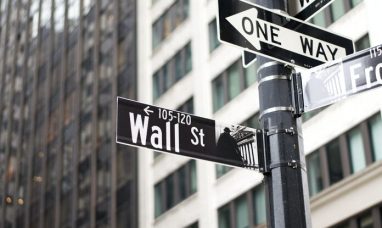Wall Street is navigating a directionless course on Monday, setting the tone for a week marked by reports assessing the resilience of U.S. consumer spending, which is hoped to prevent an economic downturn.
During morning trading, the S&P 500 edged 0.3% higher, recovering from an initial dip. The Dow Jones Industrial Average hovered near 35,281, displaying minimal change as of 10:40 a.m. Eastern time. Meanwhile, the Nasdaq composite enjoyed a 0.5% upturn.
U.S. Steel surged, witnessing one of the market’s most significant leaps with a 26.1% gain. The company’s announcement over the weekend revealed its rejection of a takeover proposal from Cleveland-Cliffs, with reports of multiple offers in circulation.
Cleveland-Cliffs rose by 3.8% after disclosing a cash and stock offer exceeding $7 billion for U.S. Steel, signaling readiness to proceed immediately with the proposal.
On the opposite end of the spectrum, Nikola experienced a dip of 10.8%. The zero-emission truck manufacturer recalled over 200 electric vehicles following an investigation that pointed to a battery pack component issue as a potential cause of a previous fire. Earlier, suspicions of foul play were raised concerning a truck fire at the company’s headquarters.
Across the broader market, trading activity remained relatively subdued. The S&P 500 retreated by 2.4% in August, following a remarkable 19.5% surge in the initial seven months of the year. Analysts have contended that such a pullback was anticipated, asserting that Wall Street hastily embraced the notion that inflation would continue to ease and the economy would evade a recession.
A substantial pillar upholding the economy has been robust consumer spending in the U.S., sustained by a remarkably resilient job market.
The upcoming week will witness the U.S. government releasing its latest monthly retail sales update. Economists regard this report as one of the week’s pivotal indicators and anticipate that it will reveal an acceleration in growth, rising from 0.2% in June to 0.4% in July.
Additionally, several major retailers are scheduled to announce their profits for the April to June period. Home Depot, Target, TJX, and Walmart are among those concluding the earnings reporting season for the spring.
Although inflation has been moderating since reaching a peak last summer, it remains elevated, impacting Americans across income levels.
Conditions could potentially toughen in the coming months, as increasing interest rates elevate costs for credit cards and other payments. Student loan repayments will also exert pressure on consumers, while many have been depleting savings accumulated during the pandemic.
Economists at Deutsche Bank have projected a downturn in consumer spending during the final quarter of the year, contributing to their forecast of a mild recession extending through the first half of the subsequent year.
The week’s other significant economic event will be the release of minutes from the Federal Reserve’s most recent meeting on Wednesday. During this gathering, the central bank raised its primary interest rate to its highest level in over two decades. This marked the 11th increase in 17 months as the Fed strives to address the most pronounced inflation since the 1980s.
Optimism on Wall Street centers on this potentially being the final hike in the current cycle, with hopes for the next move by the Fed to be a rate cut. Such a move would alleviate concerns, as elevated rates curtail inflation by broadly slowing the economy and adversely affecting stock prices and other investments.
Traders generally expect the Fed to maintain rates at its upcoming meeting in slightly over a month, according to data from CME Group. Some bets are also positioned for the Fed to commence rate cuts in early 2024.
However, David Mericle, an economist at Goldman Sachs, suggests this optimism could be premature. He envisions rate cuts commencing in the spring of 2024, between April and June, as the Fed awaits a sufficient decline in inflation and the associated upward pressure.
Mericle highlights that potential concerns might arise if rate cuts lead to excessive inflation in stocks and other investments. He maintains a less pessimistic view of a recession compared to the broader market.
In the bond market, the yield on the 10-year Treasury ticked up to 4.18% from 4.16% late Friday, influencing rates for mortgages and significant loans.
The two-year Treasury yield, which responds more to Fed expectations, climbed to 4.94% from 4.90%.
In global stock markets, European indexes displayed a mixed performance after mostly declining in Asia.
The focus on China’s waning economic recovery persisted among many investors, with stocks dropping by 1.6% in Hong Kong and 0.3% in Shanghai.
Featured Image: Unsplash @ Chenyu Guan















